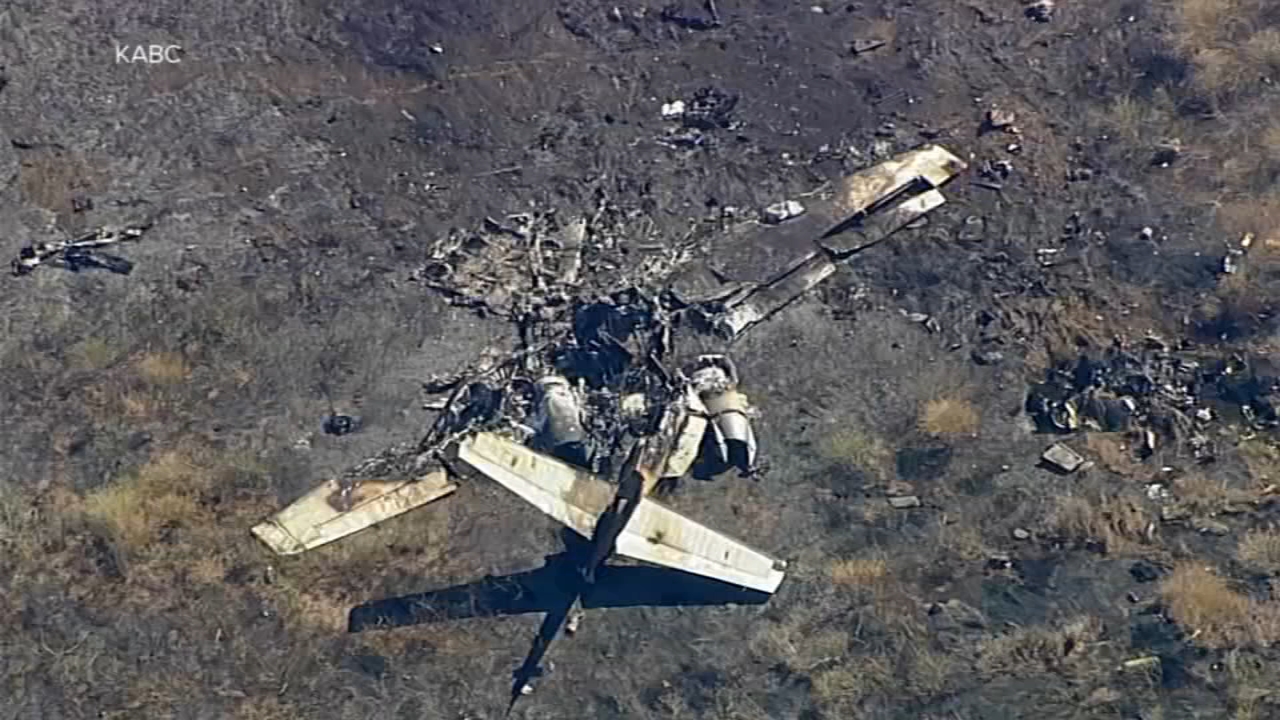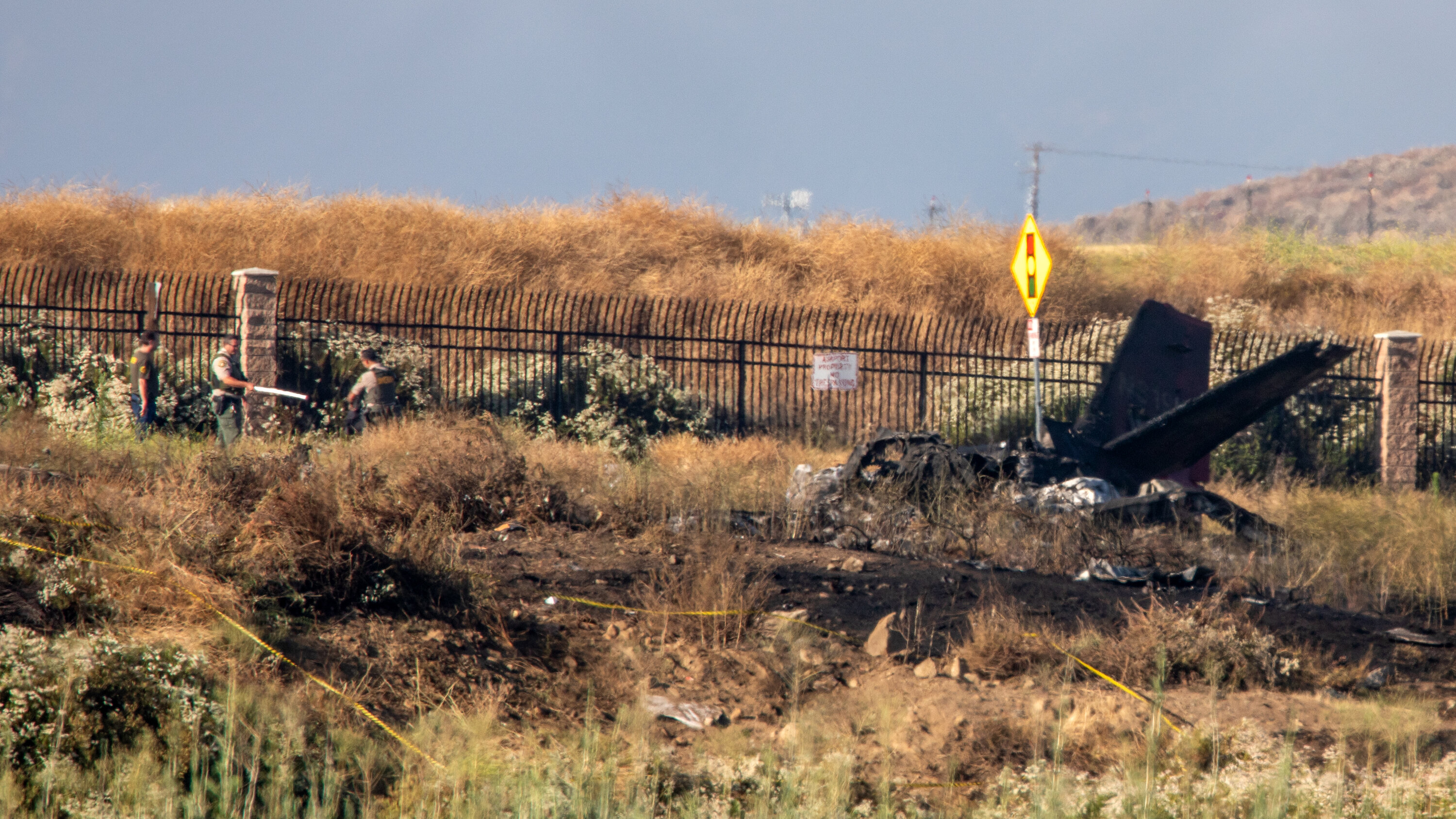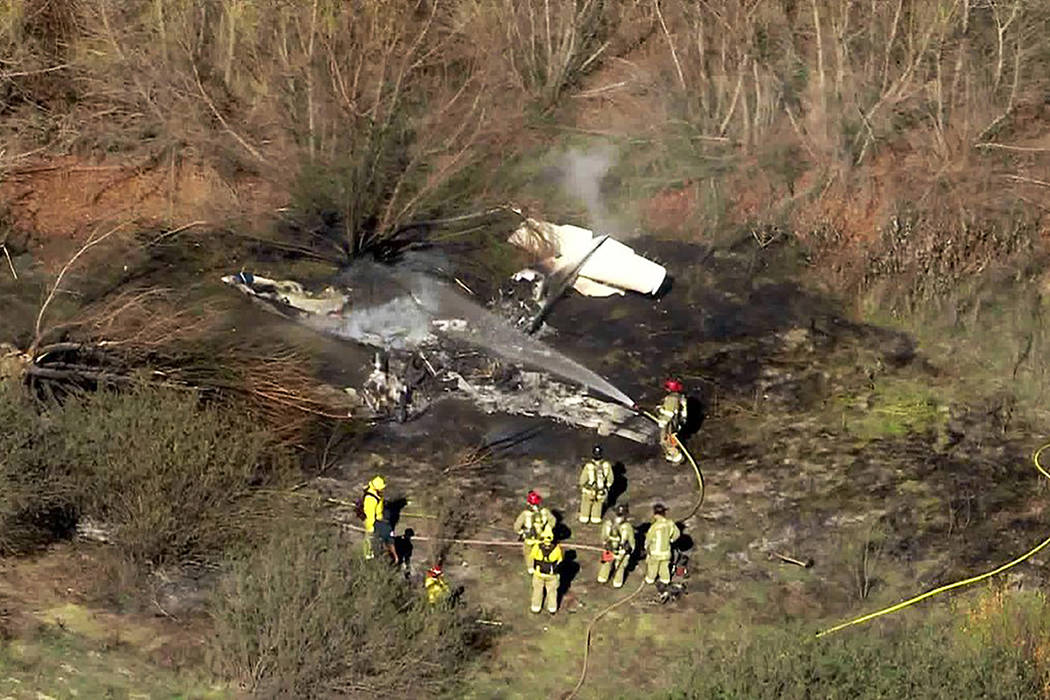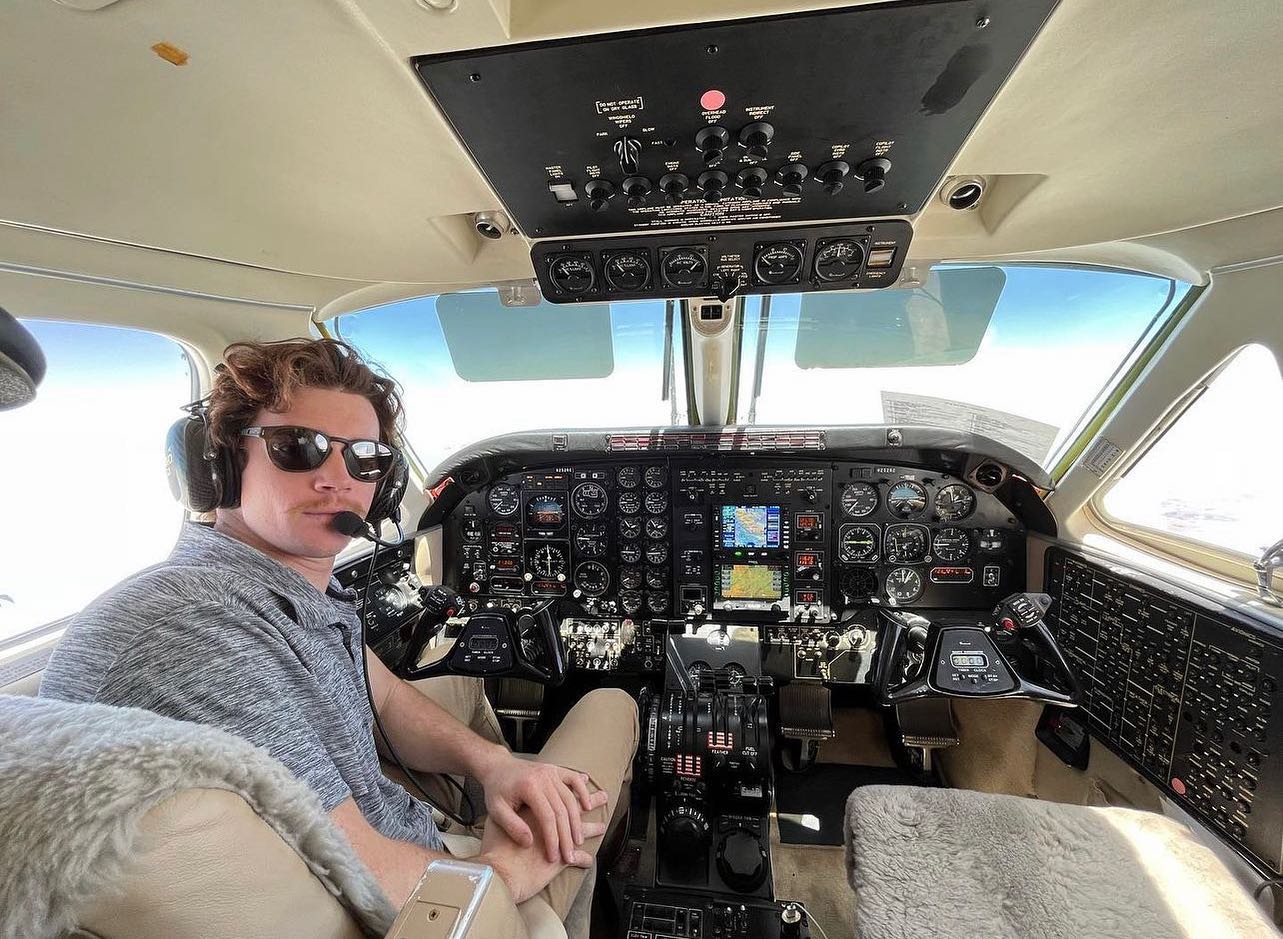California Plane Crash Who Was Ibrahem Razick: The phrase encompasses the tragic aviation accident that occurred in California, involving an individual named Ibrahem Razick.
This event has garnered significant attention due to its potential impact on aviation safety, prompting investigations into the circumstances surrounding the crash. Understanding the details and implications of the incident is crucial for improving air travel standards and preventing future tragedies. Historically, plane crashes have played a pivotal role in shaping aviation regulations and technological advancements to enhance passenger safety.
This article delves into the details of the California plane crash, examining the known information about Ibrahem Razick's involvement, the potential causes of the accident, and the ongoing investigations aimed at determining the full scope of this tragedy.
California Plane Crash Who Was Ibrahem Razick
Understanding the essential aspects of the California plane crash involving Ibrahem Razick is crucial for unraveling the intricacies of this tragic event. These aspects encompass various dimensions, shaping our comprehension of the accident's causes, impact, and implications.
- Chronology of events
- Aircraft involved
- Passenger and crew information
- Crash site and impact
- Rescue and recovery efforts
- Preliminary investigation findings
- Ongoing investigations
- Safety implications
Each of these aspects contributes to a comprehensive understanding of the California plane crash. The chronology of events provides a timeline of the accident, while information about the aircraft involved sheds light on its technical specifications and maintenance history. Details regarding passengers and crew offer insights into the human element of the tragedy, and the crash site analysis reveals the extent of the impact and potential clues. Rescue and recovery efforts highlight the challenges and coordination involved in responding to such incidents. Preliminary investigation findings offer initial insights into the possible causes, while ongoing investigations aim to uncover the full scope of factors that led to the crash. Finally, examining the safety implications allows for proactive measures to prevent similar tragedies in the future.
Chronology of events
The precise sequence of events leading up to the California plane crash involving Ibrahem Razick holds immense significance in understanding the causes and contributing factors to this tragic incident. Reconstructing the chronology of events provides a detailed account of the actions and decisions made before, during, and after the crash, offering valuable insights into the sequence of events that unfolded.
Establishing a clear chronology of events is a crucial component of any investigation into a plane crash. It helps investigators determine the sequence of events that led to the accident, identify potential causes, and evaluate the effectiveness of safety measures. In the case of the California plane crash, the chronology of events will be meticulously examined to determine the aircraft's flight path, system performance, pilot actions, and any external factors that may have contributed to the crash.
Real-life examples of the importance of chronology of events in plane crash investigations are numerous. In the aftermath of the Germanwings Flight 9525 crash in 2015, investigators relied heavily on the chronology of events to determine that the co-pilot intentionally crashed the aircraft. Similarly, in the investigation of the Lion Air Flight 610 crash in 2018, the chronology of events helped identify a series of technical issues and pilot errors that contributed to the accident.
Understanding the chronology of events in the California plane crash is essential for several reasons. First, it provides a factual basis for determining the cause of the accident, enabling investigators to make recommendations to prevent similar incidents in the future. Second, it offers a comprehensive account of the events leading up to the crash, helping families and the public understand the circumstances surrounding the tragedy. Finally, it contributes to the broader body of knowledge on aviation safety, informing best practices and enhancing the overall safety of air travel.
Aircraft involved
The aircraft involved in the California plane crash involving Ibrahem Razick plays a crucial role in understanding the causes and contributing factors to this tragic incident. Investigating the specific details of the aircraft, including its type, maintenance history, and performance characteristics, provides valuable insights into the sequence of events that unfolded.
- Type of aircraft
Identifying the type of aircraft involved in the crash is essential for determining its performance capabilities, safety features, and any known issues associated with that particular model. Investigators will examine the aircraft's design, certification, and operational history to assess whether any inherent factors may have contributed to the accident.
- Maintenance history
The maintenance history of the aircraft involved in the crash provides insights into its overall condition and whether it was properly maintained according to established standards. Investigators will review maintenance logs, inspection records, and repair reports to determine if there were any outstanding issues or if any maintenance procedures were not followed, which could have contributed to the accident.
- Performance characteristics
The performance characteristics of the aircraft, including its speed, altitude, and maneuverability, are crucial for understanding the events leading up to the crash. Investigators will examine the aircraft's flight data recorder and cockpit voice recorder to determine the aircraft's performance during the flight and identify any anomalies or deviations from normal operating procedures.
- Previous incidents
Examining previous incidents or accidents involving the same type of aircraft can provide valuable insights into potential design flaws or operational issues that may have contributed to the California plane crash. Investigators will review safety reports, airworthiness directives, and other relevant documentation to determine if there were any known issues with the aircraft model or if similar accidents had occurred in the past.
Understanding the details of the aircraft involved in the California plane crash is essential for several reasons. First, it helps investigators determine the root cause of the accident and identify any systemic issues that need to be addressed to prevent similar incidents in the future. Second, it provides a comprehensive account of the aircraft's condition and performance, helping families and the public understand the circumstances surrounding the tragedy. Finally, it contributes to the broader body of knowledge on aviation safety, informing best practices and enhancing the overall safety of air travel.
Passenger and crew information
Passenger and crew information plays a crucial role in the investigation of the California plane crash involving Ibrahem Razick. It provides valuable insights into who was on board the aircraft, their backgrounds, and their potential role in the events leading up to the crash.
- Passenger manifest
The passenger manifest provides a list of all individuals who were on board the aircraft, including their names, ages, and nationalities. This information is crucial for identifying potential victims and survivors, as well as for understanding the demographics of those involved in the crash.
- Crew roster
The crew roster lists all of the crew members who were working on the aircraft, including the pilots, flight attendants, and any other personnel. This information is important for determining the experience and qualifications of the crew, as well as for understanding their potential roles in the crash.
- Background checks
Background checks are conducted on all passengers and crew members to identify any potential safety concerns or criminal histories. This information is crucial for ensuring the safety of the flight and for preventing individuals with malicious intent from boarding the aircraft.
- Medical history
In some cases, the medical history of passengers and crew members may be relevant to the investigation of a plane crash. This information can help investigators determine if any medical conditions may have contributed to the accident, such as a pilot suffering from a heart attack or a passenger experiencing an allergic reaction.
Passenger and crew information is essential for understanding the human element of the California plane crash. It provides insights into the identities, backgrounds, and potential roles of those involved, and helps investigators piece together the sequence of events leading up to the tragedy.
Crash site and impact
The crash site and impact of the California plane crash involving Ibrahem Razick play a crucial role in understanding the severity and consequences of this tragic event. Investigating various aspects of the crash site and its impact provides valuable insights into the dynamics of the crash, the potential causes, and the challenges faced by emergency responders.
- Debris field
Examining the debris field provides crucial information about the aircraft's trajectory, speed, and point of impact. The distribution and condition of the wreckage can help investigators reconstruct the sequence of events and identify potential factors that contributed to the crash.
- Ground impact
The nature of the ground impact can reveal important details about the force and angle of the crash. The depth and shape of the impact crater, along with the surrounding terrain, provide insights into the aircraft's momentum and the severity of the impact.
- Fire and explosion
In cases where a plane crash results in a fire or explosion, investigators carefully examine the burn patterns and damage to determine the cause and extent of the post-impact fire. This information helps them understand the potential for survivability and the challenges faced by rescue teams.
- Environmental impact
Plane crashes can have significant environmental consequences, especially if they occur in sensitive areas or involve hazardous materials. Investigators assess the impact on the surrounding ecosystem, including potential contamination of soil and water, and the disruption of wildlife habitats.
Understanding the crash site and impact of the California plane crash is essential for several reasons. It provides valuable clues about the causes of the crash, assists in the identification and recovery of victims, and informs the response and recovery efforts. Furthermore, it contributes to the broader body of knowledge on aviation safety, helping to improve crashworthiness and emergency preparedness.
Rescue and recovery efforts
In the aftermath of the tragic California plane crash involving Ibrahem Razick, rescue and recovery efforts played a crucial role in saving lives, providing medical assistance, and recovering the wreckage. These efforts involved coordination between multiple agencies and personnel, demonstrating the importance of swift and efficient response to aviation accidents.
- Search and rescue
Immediately following the crash, search and rescue teams were deployed to locate survivors and provide medical attention. This involved combing through the wreckage, stabilizing victims, and transporting them to nearby hospitals for further care.
- Recovery of victims
The recovery of victims is a critical aspect of any plane crash investigation. This involves carefully removing the remains of deceased individuals from the crash site and identifying them through various means, such as DNA analysis and dental records.
- Debris collection
Collecting and analyzing debris from the crash site is essential for determining the cause of the accident. Investigators meticulously gather aircraft parts, wreckage, and personal belongings to piece together the sequence of events leading up to the crash.
- Site security
Securing the crash site is crucial to preserve evidence and prevent unauthorized access. Law enforcement and security personnel establish a perimeter around the site, controlling access and preventing contamination or disturbance of vital clues.
The rescue and recovery efforts in the California plane crash involving Ibrahem Razick involved a multifaceted approach that included search and rescue operations, victim recovery, debris collection, and site security. These efforts were critical in saving lives, providing medical assistance, and gathering evidence to determine the cause of the accident. They exemplify the importance of coordination, expertise, and swift response in aviation accident response.
Preliminary investigation findings
Preliminary investigation findings play a pivotal role in understanding the circumstances and potential causes of the California Plane Crash involving Ibrahem Razick. These initial findings provide crucial insights that guide the course of the investigation and inform the public about the progress being made.
- Aircraft Examination
Investigators meticulously examine the wreckage of the aircraft, including its engines, flight control systems, and other components, to identify any signs of mechanical failure or structural damage that may have contributed to the crash.
- Flight Data Analysis
Data from the aircraft's flight recorders, including the cockpit voice recorder and flight data recorder, is analyzed to reconstruct the sequence of events leading up to the crash. This information provides insights into the actions of the pilots, system performance, and any anomalies that may have occurred.
- Witness Interviews
Investigators interview eyewitnesses who may have seen or heard the plane before the crash. These accounts can provide valuable information about the aircraft's trajectory, behavior, and any unusual observations that may assist in determining the cause of the crash.
- Meteorological Data
Weather conditions at the time of the crash are carefully examined to determine if factors such as strong winds, turbulence, or visibility issues may have played a role in the accident. Meteorological data is analyzed to reconstruct the weather conditions and assess their potential impact on the aircraft's performance.
Preliminary investigation findings in the California Plane Crash involving Ibrahem Razick serve as building blocks for a comprehensive understanding of the accident's causes. They help investigators narrow down the scope of the investigation, prioritize areas for further examination, and determine the next steps in the process of unraveling the truth behind this tragic event.
Ongoing investigations
The California Plane Crash involving Ibrahem Razick has sparked a comprehensive investigation to determine the causes and contributing factors behind this tragic event. Ongoing investigations play a crucial role in unraveling the truth and ensuring the safety of future air travel.
- Witness Interviews
Investigators continue to interview potential witnesses who may have seen or heard the plane before the crash. These accounts can provide valuable insights into the aircraft's trajectory, behavior, and any unusual observations that may assist in determining the cause of the crash.
- Forensic Analysis
Forensic experts are examining the wreckage of the aircraft, including its engines, flight control systems, and other components, to identify any signs of mechanical failure or structural damage that may have contributed to the crash.
- Data Analysis
Data from the aircraft's flight recorders, including the cockpit voice recorder and flight data recorder, is being meticulously analyzed to reconstruct the sequence of events leading up to the crash. This information provides insights into the actions of the pilots, system performance, and any anomalies that may have occurred.
- Safety Reviews
Aviation authorities are conducting thorough safety reviews of the airline's operations, maintenance procedures, and pilot training programs to identify any areas for improvement and prevent similar accidents from happening in the future.
The ongoing investigations into the California Plane Crash involving Ibrahem Razick are essential for ensuring transparency, accountability, and the advancement of aviation safety. The findings from these investigations will not only help determine the cause of this specific crash but also contribute to a broader understanding of potential risks and vulnerabilities in air travel, leading to the implementation of necessary measures to enhance safety and prevent future tragedies.
Safety implications
The California Plane Crash involving Ibrahem Razick has brought forth significant safety implications that warrant thorough investigation and discussion. These implications encompass various facets that touch upon the broader aspects of aviation safety, seeking to prevent similar tragedies in the future.
- Aircraft design and maintenance
Scrutinizing the design and maintenance practices of the aircraft involved in the crash is crucial. This includes examining potential flaws in the aircraft's systems, assessing the adequacy of maintenance protocols, and evaluating the role of human factors in the upkeep of the aircraft.
- Pilot training and certification
The training and certification procedures for pilots come under scrutiny, with a focus on evaluating whether they adequately prepare pilots for handling emergencies and responding to unforeseen circumstances during flight.
- Air traffic control and communication
The effectiveness of air traffic control systems and communication protocols is examined, assessing their role in ensuring safe and efficient airspace management, preventing collisions, and providing timely assistance in emergency situations.
- Emergency response and investigation
The efficiency of emergency response mechanisms, including the coordination between various agencies and personnel, is evaluated. Additionally, the thoroughness and transparency of accident investigations are assessed, ensuring that lessons learned from past incidents are effectively applied to enhance safety measures.
By delving into these safety implications, authorities can identify areas for improvement, implement stricter regulations, and foster a culture of safety consciousness within the aviation industry. These efforts will contribute to preventing future accidents, ensuring the safety of passengers and crew, and maintaining public confidence in air travel.
Conclusion:
The in-depth exploration of the California Plane Crash involving Ibrahem Razick has brought to light crucial insights into the intricate factors that contribute to aviation safety. Key findings underscore the significance of meticulous aircraft design and maintenance practices, robust pilot training and certification programs, efficient air traffic control and communication systems, and thorough emergency response protocols. The interconnectedness of these elements highlights the importance of a holistic approach to aviation safety, where each aspect plays a vital role in safeguarding the lives of passengers and crew.
Moving forward, it is imperative that aviation authorities and stakeholders prioritize the implementation of stricter regulations, enhanced training programs, and advanced technologies to address the safety implications revealed by this tragic event. Only through collective efforts and unwavering commitment to safety can we prevent similar tragedies from occurring in the future. The California Plane Crash serves as a stark reminder of the fragility of human life and the immense responsibility we bear to ensure the safety of those who entrust us with their lives when they board an aircraft.
Navigating Grief: Support And Healing For Mourning Families
Doni Bobes: The Modern-Day Oracle
Who Was Private Leroy Dulaney? Uncovering His Extraordinary Story

6 California plane crash victims ID'd after 1979 Cessna C550 crash at

6 Dead in Cessna Plane Crash in Murietta, Calif. The New York Times

Plane crashes after takeoff in Southern California; 4 killed Nation

Plane crashes in Davis field; 1 person taken to hospital Sacramento Bee

6 killed in Southern California plane crash identified
ncG1vNJzZmirmaHDpnrApqpsZpSetKrAwKWmnJ2Ro8CxrcKeqmebn6J8pK3Lop2oqp6erm68y5qlnmWTp660tIywn6hlp5bAbrXBq5ihnZ1iv6LGyJyiZ6Ckork%3D